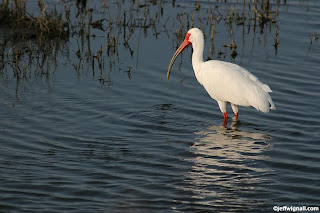 Spot metering is the ultimate refinement in metering small, selective areas, because it reads only one tiny area of the viewfinder, typically only a few centimeters in diameter. In my Nikon D90's viewfinder, for example, the spot metering is done in an area that's just .14 inches (3.5cm) across which represents just 2% of the overall frame. The purpose of this mode is to let you take metering readings from very exacting and specific areas of the frame.
Spot metering is the ultimate refinement in metering small, selective areas, because it reads only one tiny area of the viewfinder, typically only a few centimeters in diameter. In my Nikon D90's viewfinder, for example, the spot metering is done in an area that's just .14 inches (3.5cm) across which represents just 2% of the overall frame. The purpose of this mode is to let you take metering readings from very exacting and specific areas of the frame.These days I use the spot meter less and less because, I have to admit, the matrix metering (see the previous tips) is amazingly accurate. Before the days of such dependable matrix metering, I did use spot meters much more frequently. Still, there are circumstances when a spot meter is the best (and sometimes the only) way to get an accurate reading. While photographing this white ibis in Florida, for example, the bird was completely surrounded by very dark--almost black--water. A matrix reading of this scene would have given me medium gray water and probably a very overexposed (washed out) bird.
I probably could have used the center-weighted meter for this shot because the bird is relatively large in the frame, but I chose the spot meter so that I could be sure the reading was only coming from the bird. Because the bird was white, however, I did have to add +1.3 stops of exposure compensation to keep it white. (I based the amount of compensation on experience and looking at the histogram, by the way.) Had it been a medium-toned subject (a great blue heron, for example, which is gray), I could have just gone with the straight spot reading. Still, knowing exactly what I was metering helped me determine the correct amount of compensation.
You probably won't use the spot metering mode very often, but when you are confronted with a very small yet important subject area against a very bright or very dark background--a small flower blossom against a black shadowed area, for example--it can be a real life saver. Read your manual (or a Magic Lantern Guide if one is available) for more info on using specialty metering modes. I learned from reading Simon Stafford's excellent D90 Magic Lantern Guide, for instance, that the spot meter is tied to the active AF (autofocus) points in the Dynamic-area AF mode, so the spot metering area will follow the active AF area--something very important to know if you're using Dynamic-area AF and spot metering combined.






2 comments:
Jeff,
Thanks for three really great tips in a row. You have given me some ideas of how to play with metering. I intend to use these ideas on my trip to NYC this weekend!
Frank
Thanks Frank. I think exposure is my favorite subject because it's been my biggest photo challenge most of my life. My book on Exposure has lots more on this type of thing--the library might have a copy.
Post a Comment